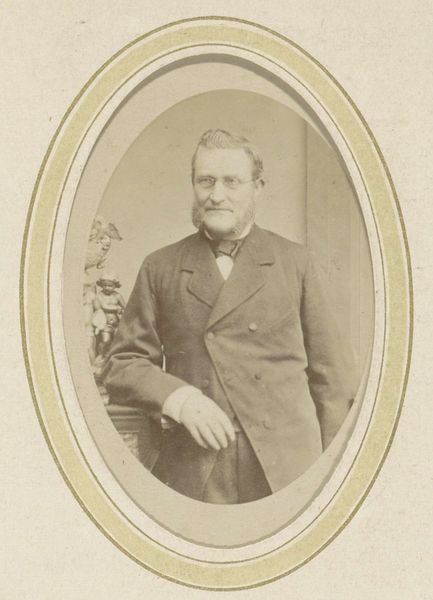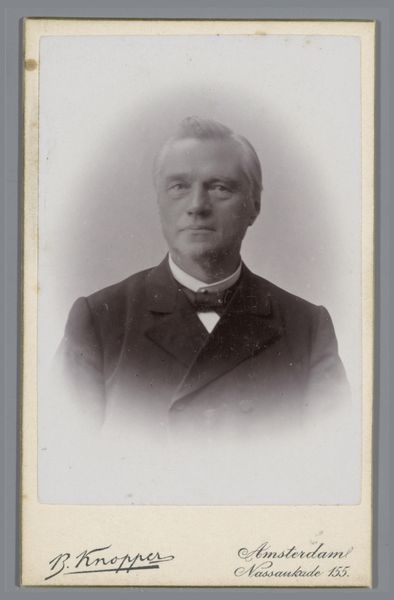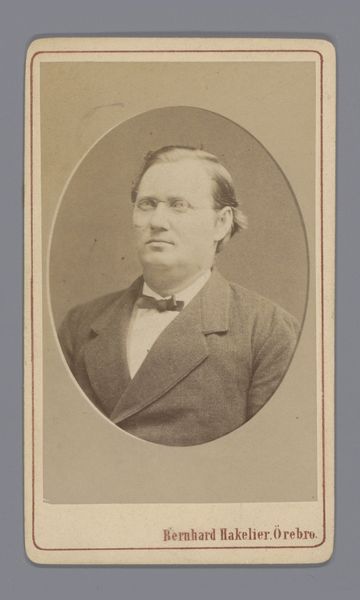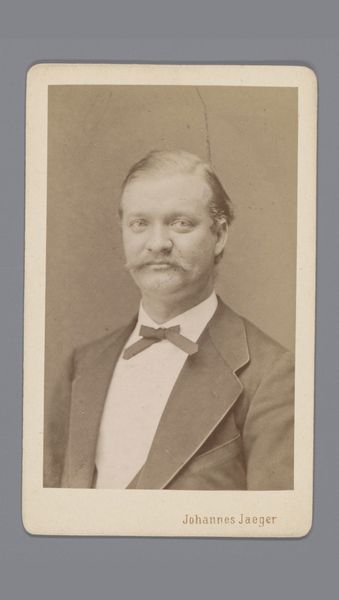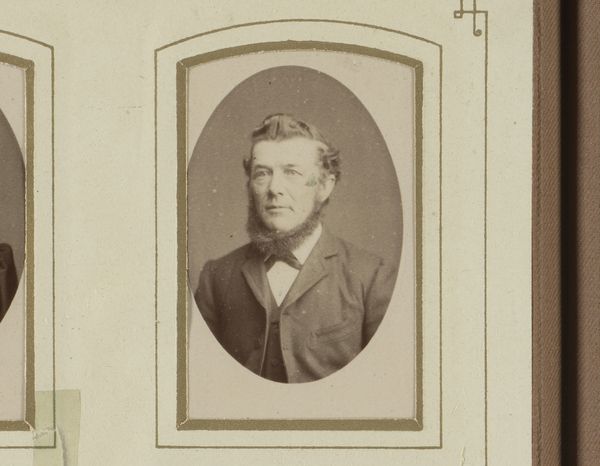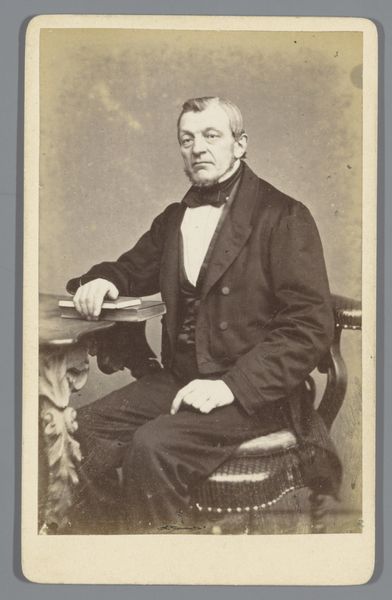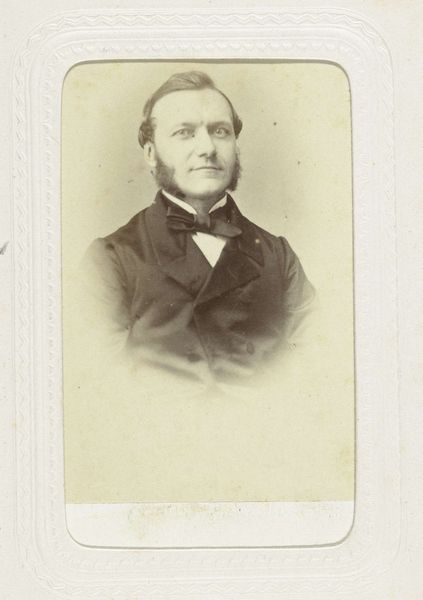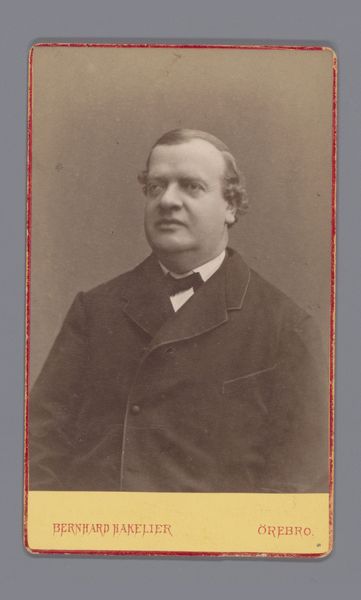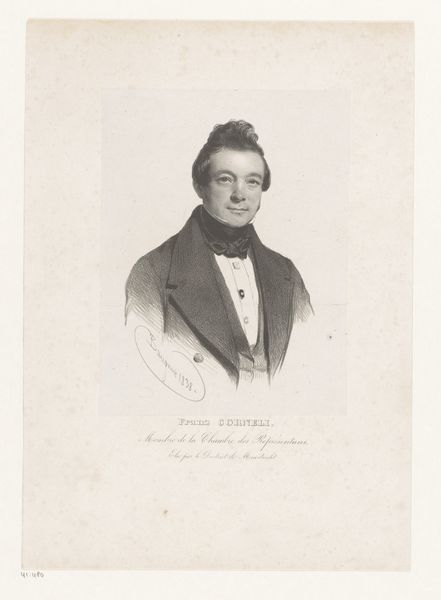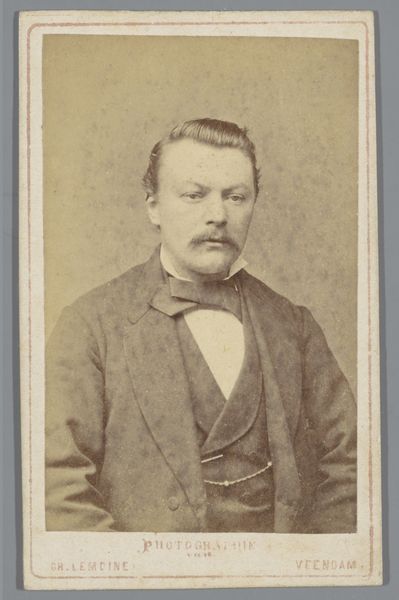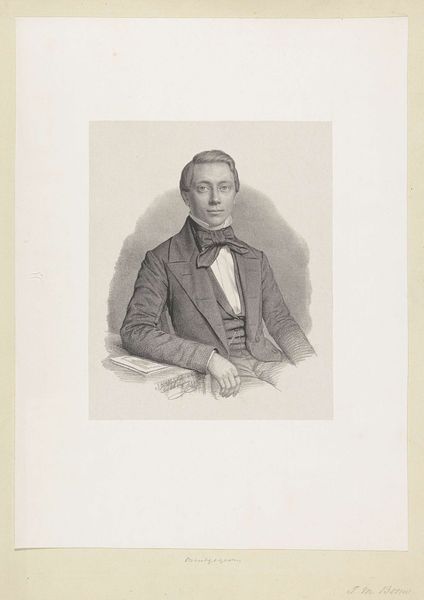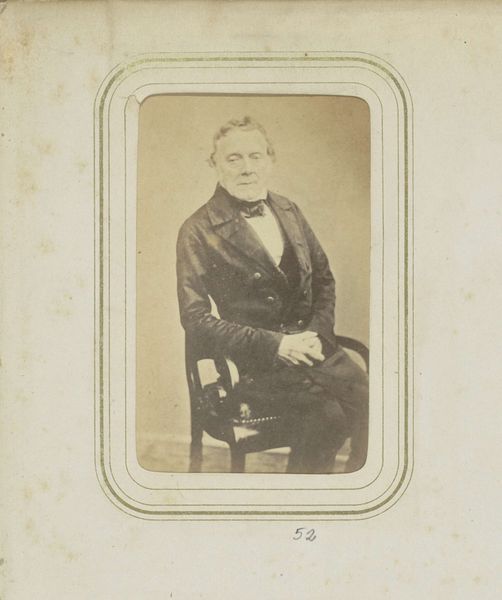
Portret van een man met bakkebaarden, een strikje en een jas 1877
0:00
0:00
friedrichjuliusvonkolkow
Rijksmuseum
Dimensions: height 90 mm, width 58 mm, height 105 mm, width 64 mm
Copyright: Rijks Museum: Open Domain
Editor: This gelatin-silver print from 1877, “Portrait of a Man with Sideburns, a Bowtie, and a Jacket," now residing in the Rijksmuseum, features Friedrich Julius von Kolkow. There's a certain solemnity to his expression that really catches my eye. What do you see in this piece? Curator: It's a captivating image, isn't it? I'm immediately drawn to how it reflects the performative aspects of identity within the context of 19th-century societal norms. Look at the precise framing, the carefully cultivated sideburns, the rigid posture. This wasn't just about capturing a likeness; it was about projecting a particular image of bourgeois masculinity, wouldn't you say? Editor: That makes sense. The bow tie and jacket seem to reinforce that. Curator: Exactly. These sartorial choices were deliberate markers of social standing and self-presentation. Furthermore, think about the power dynamics inherent in portraiture at the time. Who had access to such visual representation? What stories are being silenced or excluded through these selective portrayals? This portrait, like many others from the period, inadvertently speaks to the exclusionary practices embedded within the rise of photographic technology. Does his gaze betray a certain level of privilege or power to you? Editor: I hadn’t thought of it that way, but now I see it. It's interesting to consider who is *not* being represented in photographs from this era. Curator: Precisely. By engaging with these absences, we can critically examine the dominant narratives that were being constructed and circulated during the 19th century and beyond. This photograph is then less about von Kolkow, and more a statement about power. Editor: Thank you; I am looking at it very differently now. I’ll never look at an old photograph in the same way. Curator: Indeed! Art, when approached critically, reveals hidden dialogues of society. It serves as a reminder that what's visible is often as important as what is concealed.
Comments
No comments
Be the first to comment and join the conversation on the ultimate creative platform.
